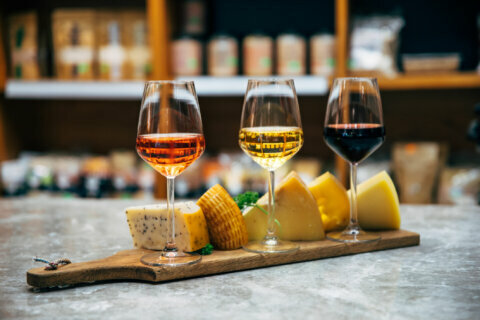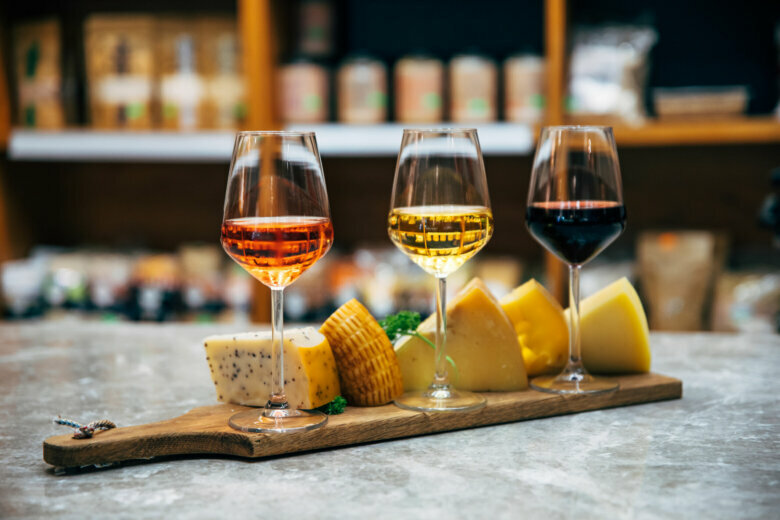
The older I get, the more I realize age isn’t such a bad thing, particularly when it comes to wine. Many consumers forget that wine is one of the few beverages that can actually improve with age. Unfortunately, most of us just aren’t willing to wait that long to find out.
Various studies have shown that somewhere between 80% and 95% of all wines bought in the United States are consumed within 48 hours of being purchased. Considering that the vast majority of wine is actually produced to be consumed at a young age, it’s really not that surprising that many consumers can’t wait to get home and pop that cork — or unscrew that cap. Talk about instant gratification!
However, some wines might provide the consumer with a better experience if the buyer could just wait a tad longer … possibly five to 10 years longer. But who’s got that time kind of time to hang around, let alone store the wine properly, to wait for a wine to evolve into something a bit more interesting?
Well, there is some good news on the horizon. More than a few wine producers are now making wine that can be enjoyed closer to the date of purchase as well as stretching their legs down the road. For example, wine consultant Jean Hoefliger prides himself on walking that fine tightrope line between having consumers enjoy his wine soon after bottling as well as a few years after the cork’s been inserted in the bottle.
It is important to note that not all wines are capable of aging. Take Rosé, for example. Their fresh, vibrant characteristics are best enjoyed within a year or two of their vintage.
But there are definite advantages to aging some wines. Without getting into too much technical detail — and believe me, there are a lot of technical details — in general, wines with a low pH (such as Pinot Noir) have a greater potential of aging. Red wines with a high concentration of tannins (certain cabernet sauvignon and Syrah wines) will also likely benefit from time in the bottle.
White wines are a bit trickier since they generally don’t have a lot of tannins to get them very far down the road. However, if they have enough acidity and have grabbed enough tannins from oak (or other wood) aging, they might stand a good chance of lasting, but not always improving, with age.
If you do elect to store your wine, remember to try to keep your bottles in a cool, dark place with a bit of humidity. Never store your wine over your refrigerator or heat register (like my parents did).
Wines worth aging do not have to be expensive. Here are a few notable — and affordable — wines that just might be worth the wait.
My friend, former Chilean Ambassador to the U.S., Mariano Fernandez, taught me a very valuable lesson: Wine does not have to be expensive to have aging potential. The 2019 Cousiño-Macul Antiguas Reservas Cabernet Sauvignon is a wonderful wine, year in and year out. This Cabernet from the Maipo Valley of Chile displays aromas of black plum, cherry, cassis and Asian spices on the fragrant nose. Well-structured and bone dry, it features flavors of blackberries, plums and violets with hints of vanilla and toasty oak on the soft finish. Even more incredible, this wine is age-worthy and can sit comfortably in a cellar for several years. $10
Of course, one easy way to enjoy a wine with some age on it now is to let someone else do the work for you. Tawny Port wines are an excellent way to enjoy a wine — albeit a fortified wine, that already has a bit of age on it. Tawny wines will denote a bottling date along with an indication of their character by the age on the label: 10 years old, 20 years old, 30 years old and 40 years old. They have a tendency to possess more mellow fruit characteristics and have a smoother mouthfeel than their fresher cousins. Ware’s 10-year-old Tawny is dry and structured, with mature flavors of baked apricot, dried mango, dark chocolate and almond-toffee notes. The finish has refreshing acidity. $28
As mentioned above, Syrah wines can have excellent aging potential. The 2018 Jean Louis Chave Offerus St. Joseph from the Rhone Valley of France is an affordable option for collectors who are looking for notes of dried herbs, cedar wood, ripe cherry and hints of tobacco leaf in their glass. This wine, while certainly enjoyable young, will definitely be more interesting with five to 10 years of cellaring. $28
I recently wrote about the 2018 Lail Blueprint Cabernet Sauvignon from Napa Valley, California. World-famous winemaker, Philip Melka, crafts a wine that features opulent flavor of blackberries, cassis and black cherry are supported by hints of vanilla and roasted coffee on the exceptionally long, supple finish. This wine, if properly stored, could easily last ten-plus years, and your patience will be richly rewarded. $80
Listen and subscribe to the “The Vine Guy” podcast on Podcast One








